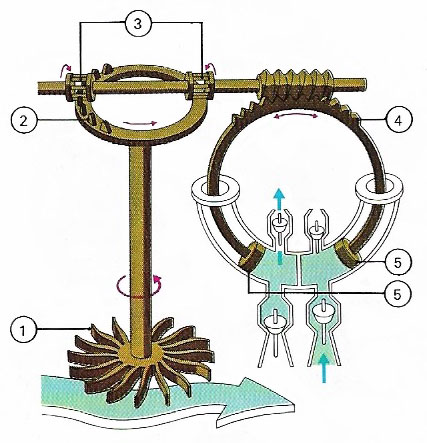turbine

A simple turbine of the 16th century used the power of running water to work a pump for irrigation. Rotation of the turbine (1) turned a wheel (2) with teeth on only half a circumference. The cog wheels (3) turned alternately in opposite directions making the pump wheel (4) oscillate. Self-acting valves allowed the pistons (5) to draw water into one cylinder while pushing it out of the other.
A turbine is a machine that generates rotary mechanical power from the energy of a moving fluid, such as water (see water turbine), steam (see steam turbine), hot gas (see gas turbine), or wind (see wind turbine). Turbines convert the kinetic energy or pressure of the fluid to mechanical energy through the principles of impulse (see impulse turbines) and reaction (see reaction turbines), or a combination of the two.
The simplest turbines have just one moving part – a rotor-blade assembly; moving fluid acts on the blades to spin them and impart energy to the rotor. Historically, the first kind of turbines to be developed for practical use were water wheels and windmills.
